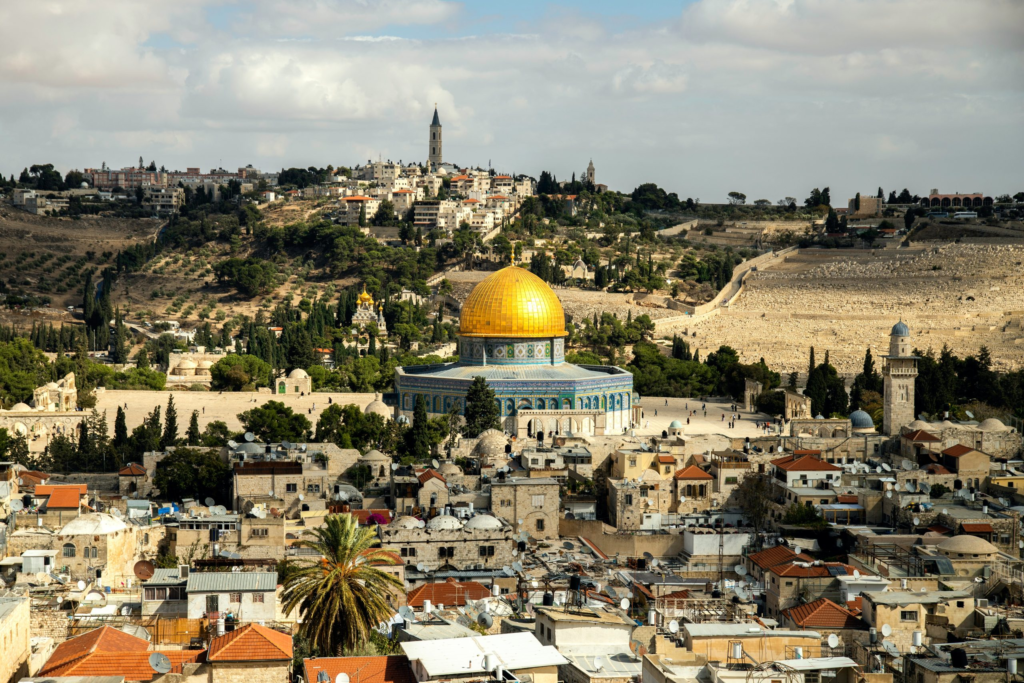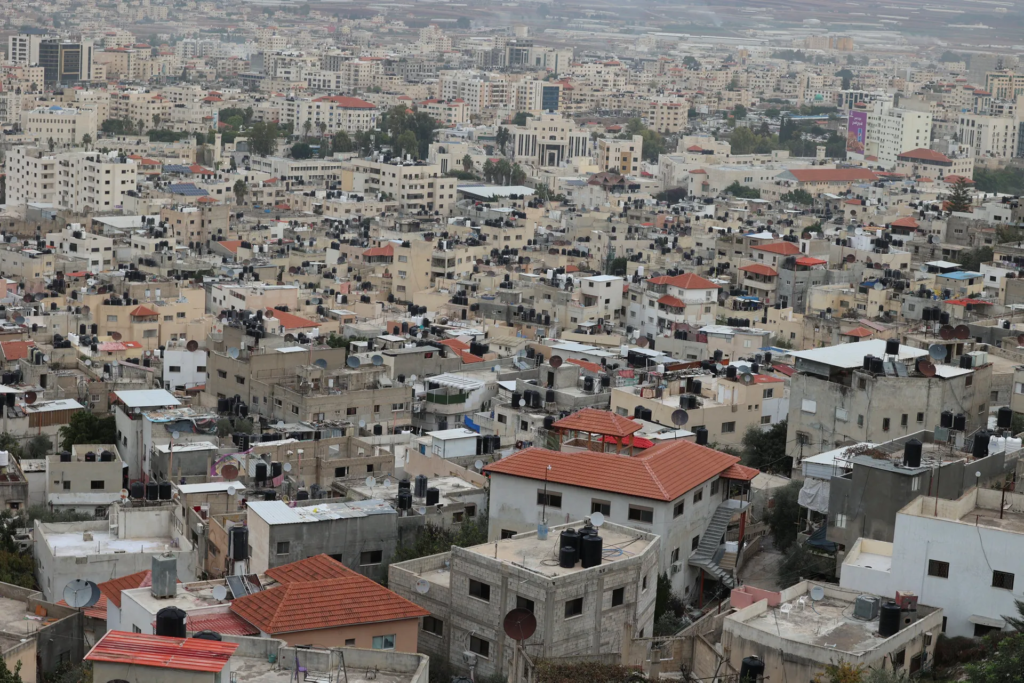Palestine, a region of profound historical significance and enduring geopolitical complexities, is a land that holds deep cultural and spiritual meaning for millions around the world. Nestled in the eastern Mediterranean region, Palestine’s unique geography and diverse landscapes make it a place of remarkable beauty and significance.
Table of Contents
Geography
Palestine is situated in the Middle East, bordered by Israel to the west and north, Jordan to the east, and Egypt to the southwest. The region spans approximately 6,220 square kilometers, encompassing the West Bank and the Gaza Strip. The terrain is diverse, ranging from the coastal plains of the Gaza Strip to the rugged, mountainous regions of the West Bank. The Jordan River, a vital waterway, flows along the eastern border of the West Bank, and the Dead Sea, the lowest point on Earth’s surface, lies along its eastern shore. Palestine’s Mediterranean climate features hot, dry summers and mild, wet winters, making it an attractive destination for visitors.
States of Palestine
The State of Palestine is divided into two main territories: the West Bank and the Gaza Strip. The West Bank, with a population of approximately 2.8 million, includes major cities such as Ramallah, Bethlehem, and Hebron. Ramallah serves as the administrative capital and a hub of Palestinian political activity. The Gaza Strip, home to about 2 million people, is a narrow coastal enclave that has faced significant challenges due to its political situation and blockade. Gaza City is the largest urban center in the Gaza Strip. The division between these two territories has significant implications for the political and social landscape of Palestine.
History of Palestine
Palestine’s history is a tapestry of ancient civilizations, religious significance, and ongoing conflict. The region has been inhabited since prehistoric times and has seen the rise and fall of numerous empires, including the Egyptians, Canaanites, Israelites, Babylonians, Persians, Greeks, Romans, Byzantines, and Ottomans. Jerusalem, one of the world’s oldest cities, holds profound religious significance for Jews, Christians, and Muslims alike.
The modern history of Palestine is marked by the British Mandate period following World War I, the subsequent establishment of the State of Israel in 1948, and the resulting Arab-Israeli conflict. The 1948 Arab-Israeli War led to the displacement of hundreds of thousands of Palestinians, an event known as the Nakba. The 1967 Six-Day War resulted in Israel’s occupation of the West Bank and Gaza Strip, territories that remain central to the Israeli-Palestinian conflict.
Culture of Palestine
Palestinian culture is a rich blend of ancient traditions and modern influences. The culture is deeply rooted in Arab customs and Islamic traditions, with a strong emphasis on family, hospitality, and community. Palestinian art, music, and literature reflect the people’s resilience and connection to their land.
Traditional Palestinian music features instruments such as the oud, qanun, and darbuka, and is often accompanied by folk dances like the dabke. Palestinian cuisine is renowned for its flavorful dishes, including hummus, falafel, and maqluba. The embroidery of Palestinian women, known as tatreez, is a vibrant and intricate art form that tells stories of heritage and identity.
Top Ten Must-Visit Places in Palestine
Palestine, a region steeped in history and culture, offers a unique blend of ancient landmarks, religious sites, and vibrant cities. Here are ten must-visit places in Palestine that showcase its rich heritage and diverse landscapes.
1. Jerusalem

Jerusalem, a city of profound religious significance, is a must-visit for its historic and spiritual sites. The Old City, with its narrow alleys and ancient walls, houses the Western Wall, the Church of the Holy Sepulchre, and the Dome of the Rock.
2. Bethlehem

Bethlehem, known as the birthplace of Jesus Christ, is home to the Church of the Nativity. This historic church, with its ancient mosaics and religious significance, attracts pilgrims and tourists alike.
3. Jericho

Jericho, one of the oldest inhabited cities in the world, offers a glimpse into ancient history. The city’s archaeological sites, such as the Tell es-Sultan and Hisham’s Palace, are must-see attractions.
4. Ramallah

Ramallah, the vibrant cultural and political center of Palestine, is known for its lively arts scene, cafes, and nightlife. The city also hosts the Mahmoud Darwish Museum, dedicated to the famous Palestinian poet.
5. Hebron

Hebron, one of the oldest cities in the region, is famous for the Cave of the Patriarchs, a site sacred to Jews, Christians, and Muslims. The city’s bustling market and traditional glass and pottery workshops are also worth exploring.
6. Nablus

Nablus, a city with a rich cultural heritage, is known for its old souks, soap factories, and the historic Jacob’s Well. The city’s vibrant markets and traditional sweets, such as knafeh, are a treat for visitors.
7. Gaza City

Gaza City, despite its challenges, offers historical and cultural sites worth visiting. The Great Omari Mosque, the oldest in Gaza, and the ancient port of Anthedon are significant attractions.
8. Jenin

Jenin, a city with a long history, is known for its resistance and resilience. The Freedom Theatre, promoting cultural resistance, and the ancient ruins of Belameh are notable sites.
9. Qalqilya

Qalqilya, located near the Green Line, is known for its vibrant markets and the Qalqilya Zoo, the only zoo in the West Bank. The city offers a mix of modern and traditional Palestinian life.
10. Dead Sea

The Dead Sea, bordering Jordan and Palestine, is a unique natural wonder. Its hyper-saline waters and therapeutic mud attract visitors seeking relaxation and health benefits. The surrounding area offers stunning landscapes and ancient sites like Qumran, where the Dead Sea Scrolls were discovered.
Tourism
Tourism in Palestine is a growing sector, with visitors drawn to its rich historical and religious sites. Jerusalem, Bethlehem, and Hebron are major pilgrimage destinations for Christians, Jews, and Muslims. Despite political challenges, efforts are being made to promote sustainable tourism and enhance visitor experiences. The Palestinian Ministry of Tourism and Antiquities works to preserve and promote cultural heritage sites, offering guided tours and educational programs. Community-based tourism initiatives also provide opportunities for visitors to engage with local communities and experience Palestinian hospitality firsthand.
Best Time to Visit
The best time to visit Palestine is during the spring (March to May) and autumn (September to November) when the weather is mild and pleasant. Spring offers blooming wildflowers and lush landscapes, while autumn brings cooler temperatures and a vibrant atmosphere. These seasons are ideal for exploring historical sites, participating in cultural events, and enjoying outdoor activities.
Top Eight Best Foods of Palestine








Israel-Gaza Conflict
The Israel-Gaza conflict is a protracted and deeply rooted struggle between the State of Israel and Palestinian groups in the Gaza Strip, primarily Hamas. This conflict has resulted in numerous military confrontations, blockades, and humanitarian crises. The Gaza Strip, controlled by Hamas since 2007, has experienced frequent outbreaks of violence, leading to significant casualties and destruction. The blockade imposed by Israel and Egypt has severely restricted the movement of people and goods, exacerbating the humanitarian situation.
Efforts to achieve a lasting peace have been challenging, with periodic ceasefires often disrupted by renewed hostilities. The international community continues to call for a negotiated two-state solution that recognizes the rights and aspirations of both Israelis and Palestinians.
Festivals
Palestine’s cultural calendar is filled with vibrant festivals and celebrations. Major Islamic holidays such as Eid al-Fitr and Eid al-Adha are widely observed, marked by communal prayers, feasts, and family gatherings. Christian holidays, including Christmas and Easter, are celebrated with special events in cities like Bethlehem and Jerusalem.
The annual Palestine International Festival showcases local and international music, dance, and theater performances, promoting cultural exchange and artistic expression. The Olive Harvest Festival, held in the West Bank, celebrates the importance of the olive tree to Palestinian heritage and economy, featuring traditional music, dance, and culinary delights.
Economy
The Palestinian economy faces significant challenges due to political instability, restrictions on movement, and limited access to resources. Key sectors include agriculture, manufacturing, and services. Agriculture remains a vital part of the economy, with olives, citrus fruits, and vegetables being major products. The service sector, including tourism and information technology, is growing, offering new opportunities for economic development.
The Palestinian Authority and various international organizations are working to improve infrastructure, support entrepreneurship, and enhance economic resilience. Initiatives to promote sustainable agriculture, renewable energy, and digital innovation are key to addressing economic challenges and fostering growth.
Future Prospects
The future of Palestine is shaped by ongoing efforts to achieve peace, stability, and development. Political reconciliation between the West Bank and Gaza Strip is crucial for unified governance and effective administration. International support for a negotiated peace process is essential to address the root causes of the conflict and establish a viable Palestinian state alongside Israel.
Investments in education, healthcare, and infrastructure are vital for improving living standards and fostering economic growth. Empowering youth and women through education and entrepreneurship can drive innovation and social progress. Despite the challenges, the resilience and determination of the Palestinian people offer hope for a brighter future.
Conclusion
Palestine is a land of profound historical, cultural, and religious significance, marked by its diverse geography and enduring challenges. From its ancient cities and religious sites to its vibrant cultural traditions, Palestine offers a rich and compelling narrative. Despite the complexities of the Israeli-Palestinian conflict, the spirit and resilience of the Palestinian people continue to inspire hope for a peaceful and prosperous future. As efforts toward peace and development continue, Palestine remains a testament to the enduring human spirit and the quest for justice and dignity.

